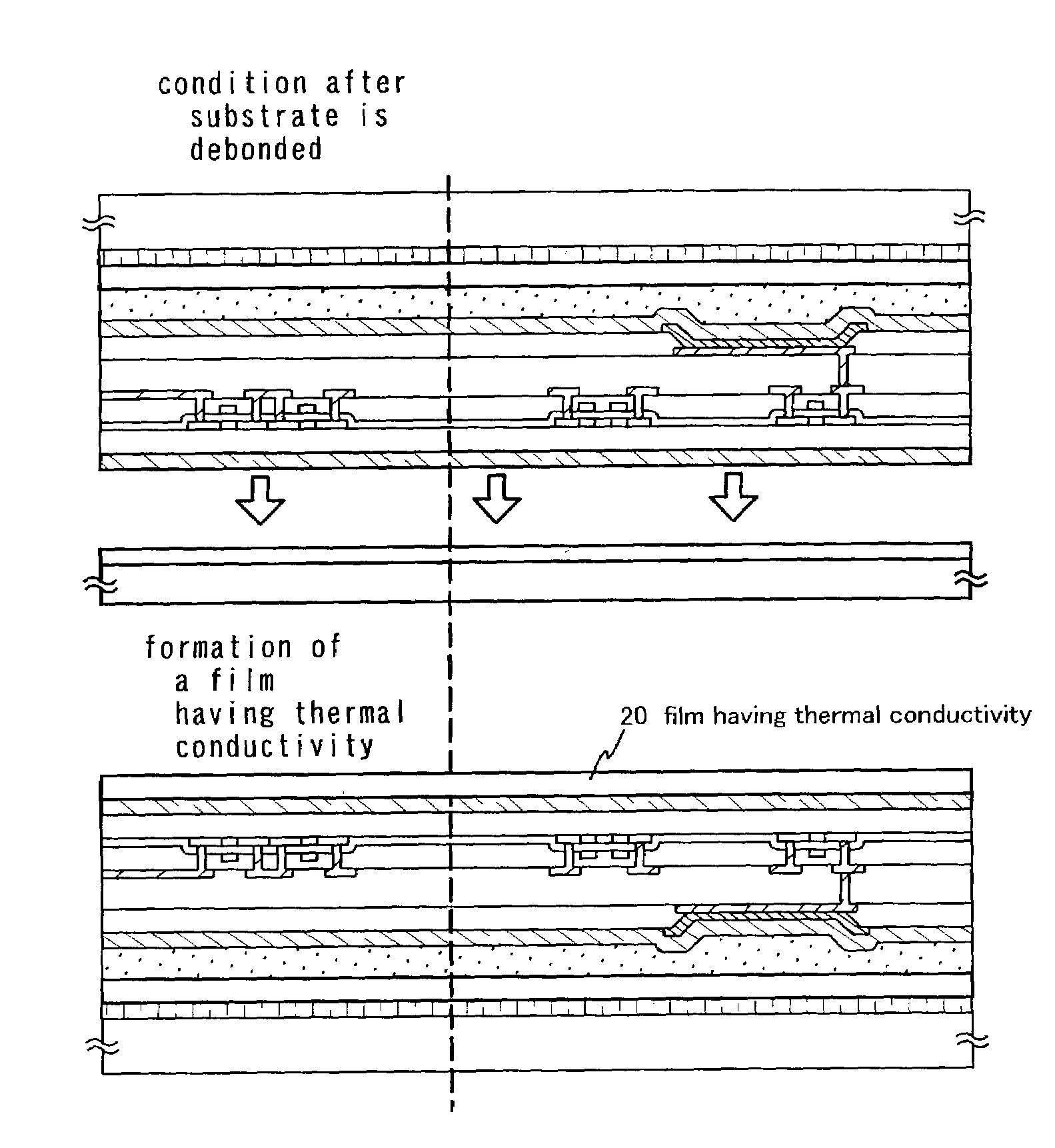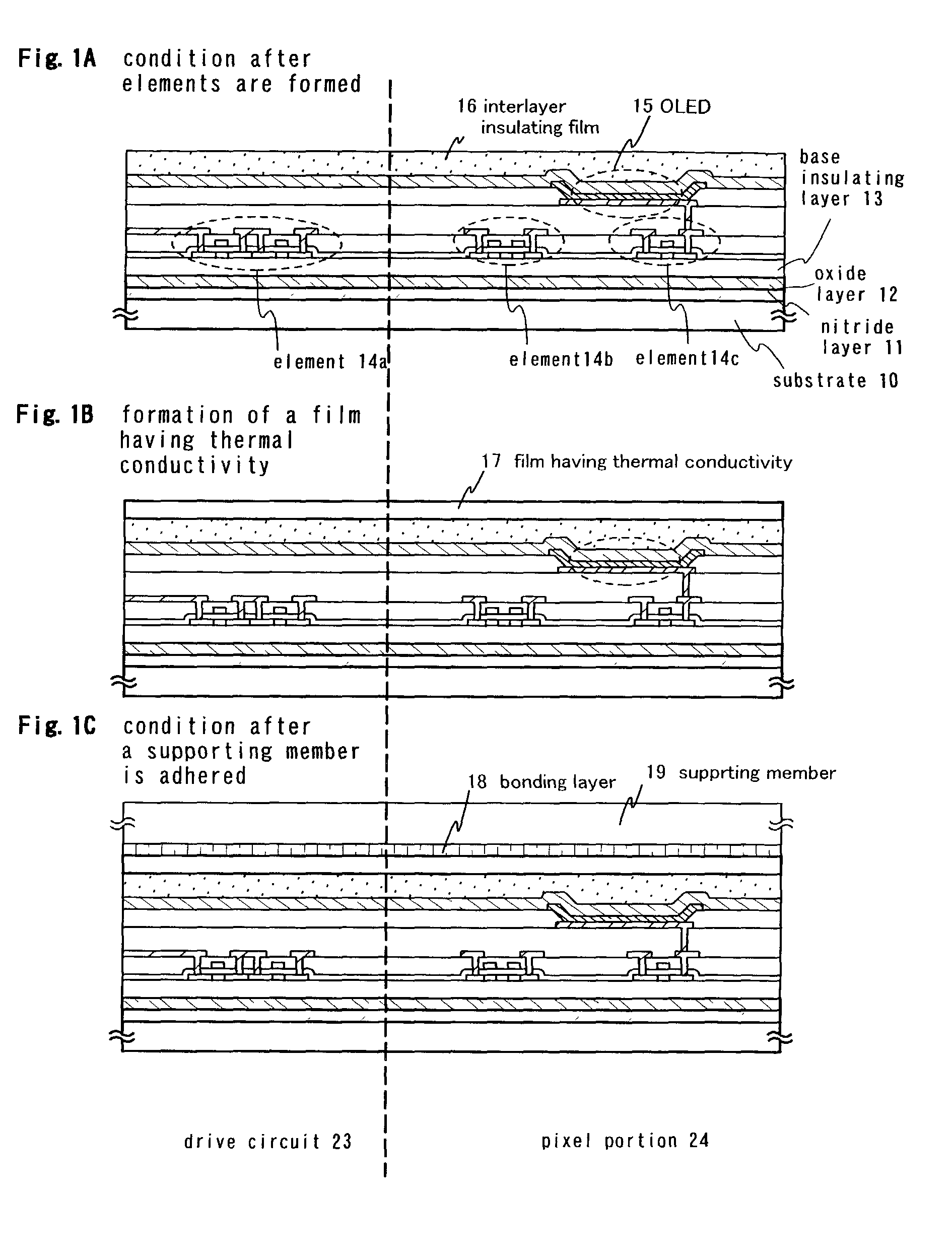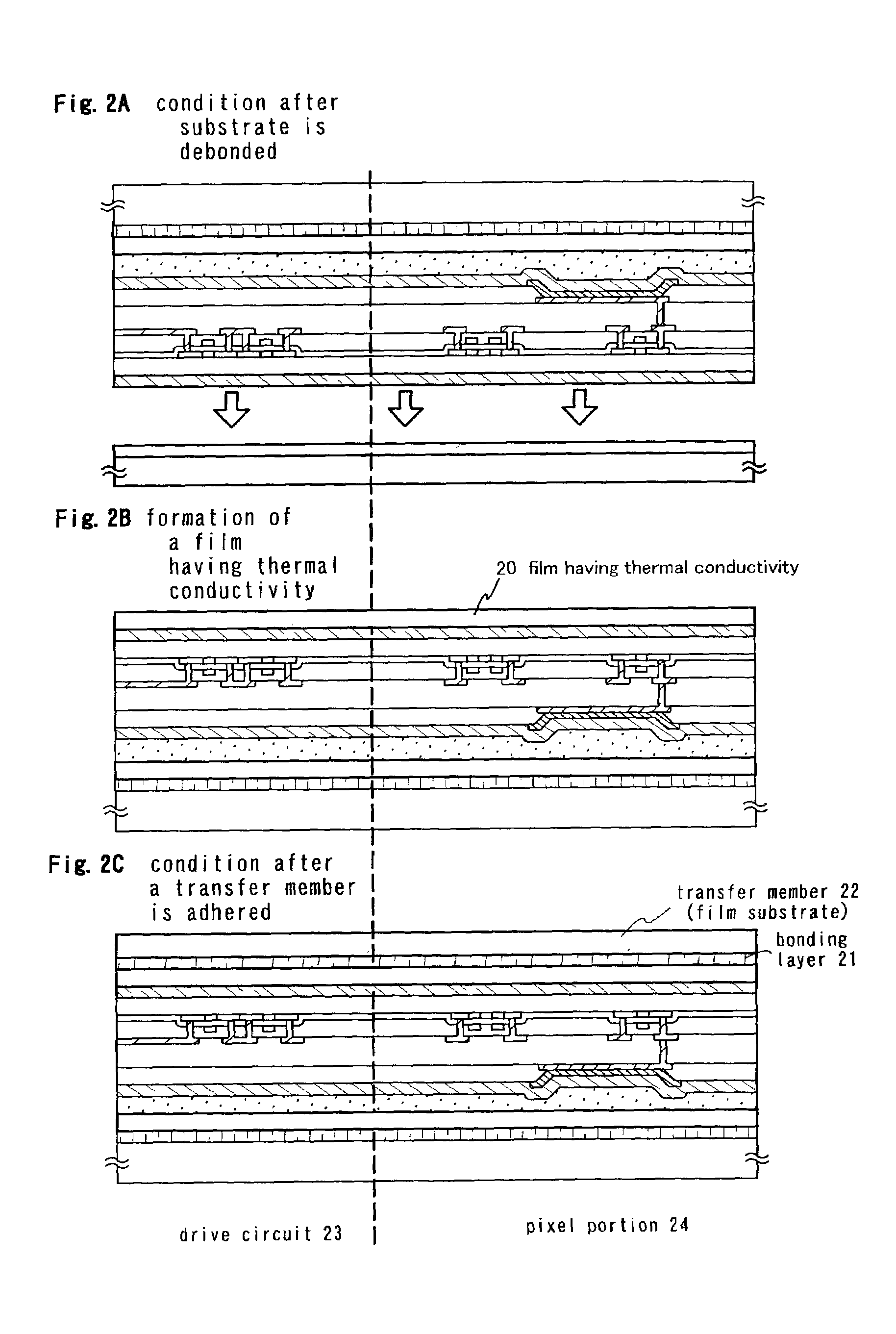Light emitting device, semiconductor device, and method of fabricating the devices
a technology of semiconductor devices and light-emitting devices, which is applied in the direction of identification means, instruments, optics, etc., can solve the problems of easy cracking and heavy, glass substrates and quartz substrates are difficult to be made larger, and cannot help lowering the highest temperature of the process, so as to achieve limited deterioration due to water and oxygen permeation
- Summary
- Abstract
- Description
- Claims
- Application Information
AI Technical Summary
Benefits of technology
Problems solved by technology
Method used
Image
Examples
embodiment 1
[0132]An example of fabrication of a light emitting device having an OLED and using the TFTs obtained in accordance with Embodiment 1 will be described with reference to FIG. 5.
[0133]FIG. 5 shows an example of a light emitting device (in a state before sealing) having a pixel portion and a drive circuit for driving the pixel portion, the pixel portion and the drive circuit being formed on one insulating member. A CMOS circuit forming a basic unit in the drive circuit and one pixel in the pixel portion are illustrated. The CMOS circuit can be obtained in accordance with Embodiment 1.
[0134]Referring to FIG. 5, a substrate 200, a nitride layer 201 and an oxide layer 202 are provided. On a base insulating layer 203 formed on the element formation substrate, the drive circuit 204 constituted of an n-channel TFT and a p-channel TFT, a switching TFT, which is a p-channel TFT, and a current control TFT, which is an n-channel TFT, are formed. In this embodiment, each of the TFTs is formed as...
embodiment 2
[0165]While an example of use of the top gate TFT in Embodiment 2 has been described, a bottom gate TFT can also be used. An example of an arrangement using a bottom gate TFT will be described with reference to FIG. 8.
[0166]As shown in FIG. 8, each of an n-channel TFT 913, a p-channel TFT 914, and an n-channel TFT 911 is of the bottom gate structure. The TFTs in the bottom gate structure may be fabricated by using well-known techniques. The active layer of these TFTs may be a semiconductor film having a crystalline structure (e.g., polysilicon) or a semiconductor film having an amorphous structure (e.g., amorphous silicon).
[0167]In FIG. 8 are illustrated a flexible film substrate 900 (e.g., a plastic substrate), a film 901 having thermal conductivity (e.g., aluminum nitride film), a pixel portion 902, a gate-side drive circuit 903, an insulating film 910, a pixel electrode (cathode) 912, a bank 915, an organic compound layer 916, an anode 917, an organic resin 918, a protective film...
embodiment 3
[0168]The arrangement is the same as that of Embodiment 3 except for the n-channel TFT 913, the p-channel TFT 914 and the n-channel TFT 911. The description of the same details will not be repeated.
[0169]In this embodiment, when an organic compound layer is formed by an ink jet method, the organic compound layer is continuously formed through a plurality of pixels. More specifically, an example of formation in which the organic compound layer is formed in a stripe form on each of columns or rows of pixel electrodes arranged in correspondence with a matrix with m rows and n columns will be described. Also, the organic compound layer is formed in an oblong or rectangular shape in correspondence with each pixel electrode.
[0170]FIGS. 9A, 9B, and 9C are diagrams illustrating this embodiment. FIG. 9A shows an arrangement in which a pixel portion 802, a scanning-line-side drive circuit 803 and a data-line-side drive circuit 804 are provided on a substrate 801. A separation layer 805 is pro...
PUM
| Property | Measurement | Unit |
|---|---|---|
| temperature | aaaaa | aaaaa |
| thickness | aaaaa | aaaaa |
| thickness | aaaaa | aaaaa |
Abstract
Description
Claims
Application Information
 Login to View More
Login to View More - R&D
- Intellectual Property
- Life Sciences
- Materials
- Tech Scout
- Unparalleled Data Quality
- Higher Quality Content
- 60% Fewer Hallucinations
Browse by: Latest US Patents, China's latest patents, Technical Efficacy Thesaurus, Application Domain, Technology Topic, Popular Technical Reports.
© 2025 PatSnap. All rights reserved.Legal|Privacy policy|Modern Slavery Act Transparency Statement|Sitemap|About US| Contact US: help@patsnap.com



